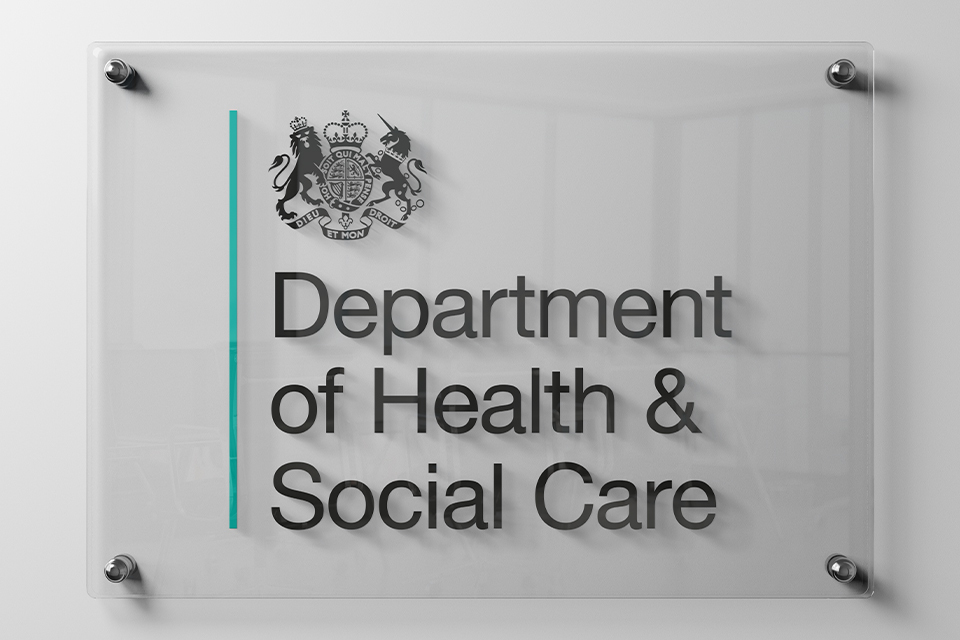-
Nearly £450 million investment to expand urgent and emergency care facilities to provide faster care for patients
-
800,000 fewer patients each year to wait more than four hours at A&E, and more will receive urgent treatment in their community
-
Part of government’s Plan for Change to modernise NHS services and improve emergencv care.
Patients will receive better, faster and more appropriate emergency care as the government sets out reforms to shorten waiting times and tackle persistently failing trusts.
The new package of investment and reforms will improve patients’ experiences this year, including by caring for more patients in the community, rather than in hospital which is often worse for patients and more expensive for taxpayers.
Backed with a total of nearly £450 million, the plan will deliver
- Around 40 new Same Day Emergency Care and Urgent Treatment Centres – which treat and discharge patients in the same day, avoiding unnecessary admissions to hospital.
- Up to 15 mental health crisis assessment centres to provide care in the right place for patients and avoid them waiting in A&E for hours for care, which is not the most appropriate setting for people who are experiencing a crisis. These centres will offer people timely access to specialist support and are directed to the right care.
- Almost 500 new ambulances will also be rolled out across the country by March 2026.
The plan’s emphasis will be on shifting more patient care into more appropriate care settings as part of the move from hospital to community under the government’s Plan for Change to rebuild the NHS, while tackling ambulance handover delays and corridor care.
Health Secretary Wes Streeting said
No patient should ever be left waiting for hours in hospital corridors or for an ambulance which ought to arrive in minutes.
We can’t fix more than a decade of underinvestment and neglect overnight. But through the measures we’re setting out today, we will deliver faster and more convenient care for patients in emergencies
Far too many patients are ending up in A&E who don’t need or want to be there, because there isn’t anywhere else available. Because patients can’t get a GP appointment, which costs the NHS £40, they end up in A&E, which costs around £400- worse for patients and more expensive for the taxpayer.
The package of investment and reforms we are announcing today will help the NHS treat more patients in the community, so they don’t end up stuck on trolleys in A&E. Hundreds of new ambulances will help cut the unacceptably long waiting times we’ve seen in recent years. And new centres for patients going through a mental health crisis will provide better care and keep them out of A&E, which are not well equipped to care for them.
By shifting staff and resources out of hospitals and into communities, and modernising NHS technology and equipment, our Plan for Change will make sure the NHS can be there for you when you need it, once again.
NHS Chief Executive Sir Jim Mackey said
Urgent and emergency care services provide a life-saving first line of defence for patients – but for too long now, despite the incredible hard work of staff, the speed and quality of NHS care has often not been good enough.
Our patients and staff deserve better, so that is why we need a radical change in approach and to ensure we get the basics right.
This major plan sets out how we will work together to resuscitate NHS urgent and emergency care, with a focus on getting patients out of corridors, keeping more ambulances on the road, and enable those ready to leave hospital can do so as soon as possible.
NHS National Director for Urgent and Emergency Care Sarah-Jane Marsh said
It is vital that patients can access our urgent and emergency care services in the right place at the right time, and that the care provided is to a standard we would want for ourselves and our own families.
While the 10 Year Health Plan will set out a longer-term vision to transform urgent and emergency services for the 21st century, there is so much more we could all be doing now.
This plan sets out not only what we know is working across the country, but how systems must work together to improve access and quality for the benefit of our patients.
In order to support this shift in delivery focus, NHS England will be asking providers and systems to be accountable to their own local Boards and populations, creating robust winter plans which will be tested during winter exercises throughout September”.
Every day, more than 140,000 people access urgent and emergency care services across England. Since 2010/11, demand has almost doubled with ambulance service usage rising by 61%.
A&E waiting time standards have not been met for over a decade, while the 18-minute target for category 2 ambulance calls has never been hit outside the pandemic.
But at least one in five people who attend A&E don’t need urgent or emergency care, while an even larger number could be better cared for in the community.
The plan focuses on making winter 2025/26 significantly better than recent winters by setting ambitious but achievable targets and increasing transparency about progress.
It marks a fundamental shift in our approach to urgent and emergency care – moving from fragmented efforts to genuine collaboration across the whole system and mean better coordination between NHS trusts and primary care to identify patients most vulnerable during winter.
And it aims to make the most difference to patients by focusing on specific improvements across the healthcare system, aligning resources to areas that need them most.
The plan will also see more patients receive care in the community, rather than being unnecessarily admitted into hospital, through measures including
- More paramedic-led care in the community – which means patients will receive more effective treatment at the scene of an accident or in their own homes from ambulance crews
- Increasing numbers of patients seen by urgent community response teams – which provide urgent care to people in their homes, helping to avoid hospital admissions and enable people to live independently for longer. Local areas will be told to lay out how they will expand access to these teams, which includes understanding level of needs;
- Better use of virtual wards – which use modern technology to provide patients with hospital-level care at home safely and in familiar surroundings, speeding up their recovery while freeing up hospital beds for patients that need them most
- And publishing league tables on performance to drive improved transparency and public accountability and as well as encouraging less effective systems to work more closely with high performing systems to accelerate improvement.
Thanks to the investment and reforms announced today, 800,000 fewer people should be forced to wait more than 4 hours for care in emergency departments this year.
Chief Executive of NHS Providers Daniel Elkeles said
There is a lot to like about this plan. It’s helpful that we’re seeing it in early summer, with time to ensure meaningful measures are in place ahead of the added pressures of winter.
It’s also good to see that so many parts of the system, including primary, community and mental health care, in addition to ambulance and hospital services, have been factored in.
The extra capital investment for same day emergency care and mental health crisis assessment centres and ambulance services is particularly welcome, as is the emphasis on vaccination – and on this we’d urge NHS staff and the public to play their part by getting that protection.
This plan should result in meaningful progress compared to last winter. As the plan acknowledges the public and our staff want to know the NHS can respond quickly, safely and effectively in an emergency. NHS Providers would like to work with NHSE and the government to develop long term UEC plans that are bold and ambitious.
Association of Ambulances Chief Executives Managing Director Anna Parry said
The new urgent and emergency care plan reaffirms AACE’s vision for the future of NHS ambulance services. By extending and formalising a wider ambulance sector remit in urgent and emergency care, we will be better placed to help resolve some of the key system pressures, reduce the risks for patients and transform patient care while offering a more positive working environment for our people.
By underscoring the importance of a system-wide focus to achieve improvements in urgent and emergency care, this new plan acts as a genuine challenge to all health and social care leaders, encouraging them to plan and act with purpose to achieve the transformation that is needed. Ambulance service leaders continue to proactively seek increased opportunities for greater collaboration with system partners while identifying new strategies and initiatives within their own ambulance trusts to achieve the transformation targets outlined in the plan.
We are particularly heartened to see the plan’s emphasis on the reduction and improved management of hospital handover delays. Handover delays have the greatest detrimental impact on ambulance resources and create unnecessary delays and additional harm for thousands of patients each year. The elimination of corridor care and the focus on reducing 12-hour waits at emergency departments is also welcomed.
Finally, we wholeheartedly endorse and support the plan’s underlined recognition of the impact of the delivery of sub-optimal care on NHS staff, alongside the pivotal role both leadership and a strong system-level approach must play in the transformation of urgent and emergency care.
NHS Confederation Chief Executive Matthew Taylor said
Health leaders across systems, providers and primary care will welcome this plan to provide better, faster and more appropriate emergency care, an area which is facing high demand and rising public concern over performance.
As the plan shows, there is a lot of good practice across the health service to build upon, including expanding the number of same day emergency treatment and mental health crisis assessment centres and rolling out more ambulances.
Making sure the NHS does not continue to fall into crisis each winter will be essential for improving public confidence in the health service. Strong collaboration between health partners and with local government to improve discharges out of hospitals will also be key to progress.






